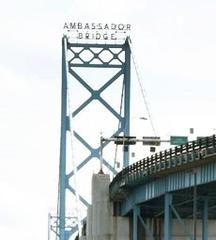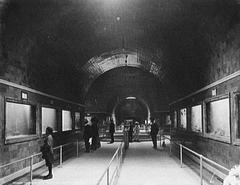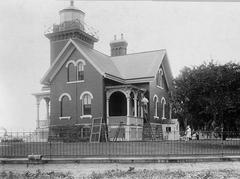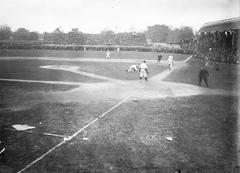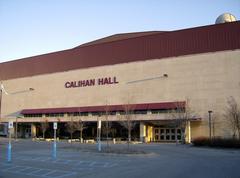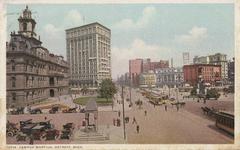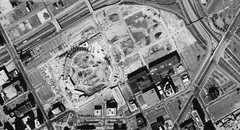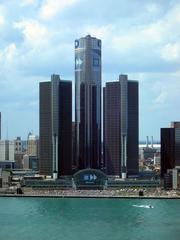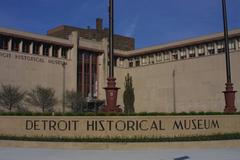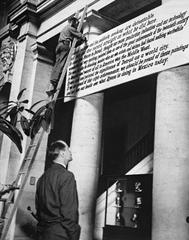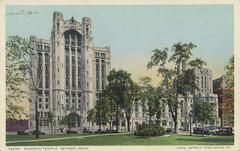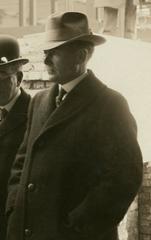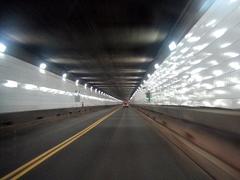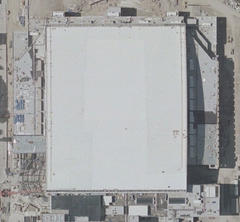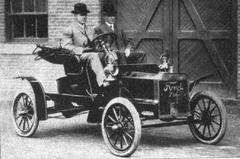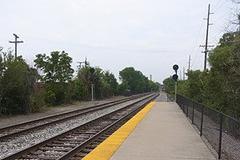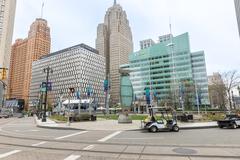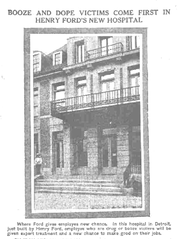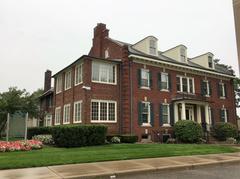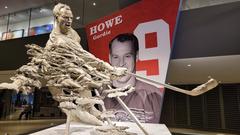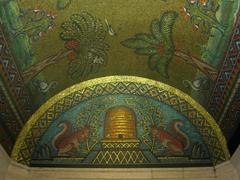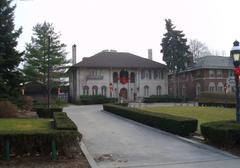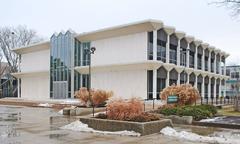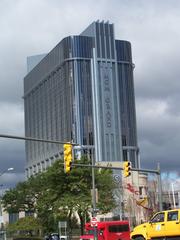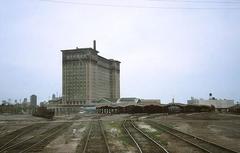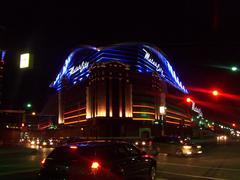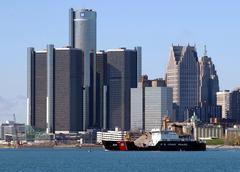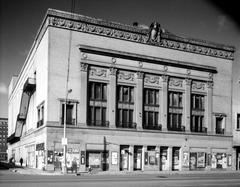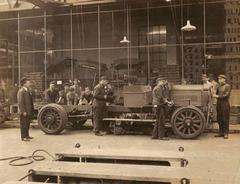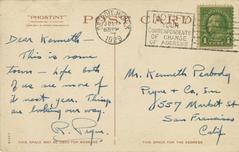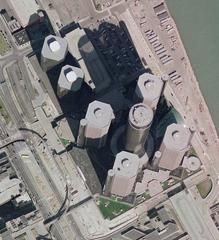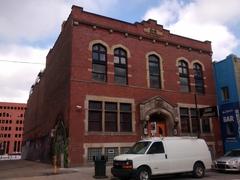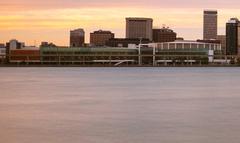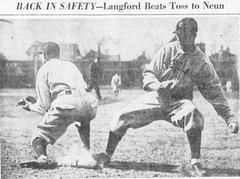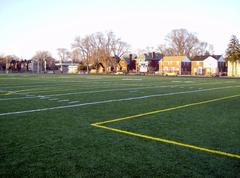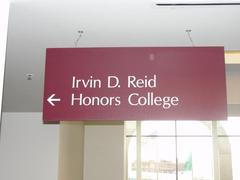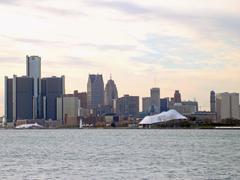The Fillmore Detroit: Visiting Hours, Tickets, and Guide to Detroit Historical Sites
Date: 15/06/2025
Introduction
Nestled in the heart of downtown Detroit, The Fillmore Detroit stands as a beacon of historical grandeur and contemporary entertainment. Originally opened in 1925 as the Palms Theatre, later known as the State Theatre, this iconic venue was designed by renowned architect C. Howard Crane, reflecting the opulence of the 1920s Renaissance Revival style. Today, The Fillmore Detroit serves as a vibrant hub for live performances, music, comedy, and special events, while also offering visitors a journey through Detroit’s golden age of theater and entertainment (Historic Detroit, Live Nation Fillmore Detroit, Wikipedia).
This guide provides a detailed overview of The Fillmore Detroit’s rich history, architectural highlights, practical visitor information—including visiting hours, ticketing, accessibility, parking, and amenities—as well as its role in Detroit’s cultural landscape. Whether it’s your first visit or a return to this iconic venue, you’ll find all the essential insights for an enriching experience.
Table of Contents
- Historical Overview
- Visiting The Fillmore Detroit: Tickets, Hours, and Practical Information
- Visuals and Interactive Media
- Frequently Asked Questions (FAQ)
- Conclusion and Call to Action
- Quick Links
- Notable Milestones and Events
- References
Historical Overview
Origins and Early Years (1925–1940s)
The Fillmore Detroit opened its doors as the Palms Theatre on October 29, 1925. Designed by C. Howard Crane—also the architect of the neighboring Fox Theatre—the Palms was a luxurious movie palace built atop the site of the first Grand Circus Theatre (Historic Detroit). With a seating capacity near 3,000 and a grand Wurlitzer organ, it quickly became a central entertainment destination (Cinema Treasures).
Transition to State Theatre & Talking Pictures (1930s–1950s)
Acquired by United Detroit Theatres and rebranded as the State Theatre, the venue became the world’s first theater primarily devoted to “talking pictures” in June 1928, premiering “Glorious Betsy” (Cinema Treasures). The opulent Italian Renaissance interiors provided a fitting backdrop for Detroit’s moviegoers during Hollywood’s golden era (Historic Detroit).
Mid-Century Shifts & Multipurpose Use (1960s–1980s)
As single-screen movie palaces declined in popularity, the State Theatre diversified its programming, hosting major music acts and adapting to the disco era as a nightclub and dance hall. Despite challenges, the building’s architectural significance was recognized in 1982 with its inclusion in the National Register of Historic Places (Wikipedia).
Clubland Era & Revival (Late 1980s–2000s)
Reopening as Clubland in 1989, the venue reclaimed its place in Detroit’s nightlife and live music scene. Interior reconfigurations allowed for cabaret-style seating and a dance floor, reducing capacity to around 2,200 guests (Detroit Historical Society).
Brand Transformation & Restoration (2007–Present)
Live Nation’s 2007 rebranding of the State Theatre as The Fillmore Detroit brought extensive restorations, reviving the venue’s Italian Renaissance grandeur and updating amenities. Renovations included lobby restorations, new chandeliers, mural preservation, and enhanced accessibility (Historic Detroit). The Fillmore Detroit now accommodates between 2,200 and 2,900 guests, depending on event configuration.
Architectural & Cultural Significance
The Fillmore Detroit exemplifies the Renaissance Revival style, featuring a terra cotta façade, ornate interiors, and a grand staircase. It has hosted a wide range of events—from classic films and Broadway-style shows to rock concerts and comedy acts. Its continued role in the Detroit Music Awards highlights its ongoing cultural impact (Wikipedia).
Visiting The Fillmore Detroit: Tickets, Hours, and Practical Information
Visiting Hours & Event Times
The Fillmore Detroit operates as a live event venue. Doors typically open one hour before showtime, with most events starting between 7:00 PM and 8:30 PM. There are no regular public tours, but special events or open houses may be announced on the official website.
Ticket Information
Tickets are available through:
- Live Nation Fillmore Detroit
- Authorized vendors such as Ticketmaster
- The Fillmore Detroit box office (open on event days)
Prices vary depending on the event and seat selection. General admission, cabaret-style seating, and reserved mezzanine/balcony seats are available. Advance purchase is recommended for popular events.
Accessibility
The Fillmore Detroit is dedicated to providing accessibility for all guests:
- Wheelchair-accessible entrances and seating
- Assistive listening devices (request at box office)
- Accessible restrooms
- Contact the venue in advance for additional accommodations (Ticketmaster Venue Guide)
Parking & Transportation
Parking options include:
- The Fillmore Detroit Parking Garage (adjacent)
- Woodward Avenue/Monroe Street garages
- Comerica Park and Fox Garage lots
- Advance reservations via ParkWhiz
Public transit: The QLINE streetcar and multiple bus routes along Woodward Avenue. Rideshare services (Uber, Lyft) have designated zones near the entrance (Event Tickets Center).
Dining & Amenities
- Concessions: Snacks and beverages—including alcoholic drinks for those 21+ (ID required)
- Merchandise: Artist and venue memorabilia available during events
- State Bar & Grill: Attached restaurant for pre/post-show dining
- Payment: Mostly cashless; major cards and digital wallets accepted (Event Tickets Center)
Visuals and Interactive Media
View images of the Fillmore’s stunning exterior, grand lobby, and auditorium on the official website. Interactive maps and virtual tours are available online for planning your visit.
Frequently Asked Questions (FAQ)
Q: What is the seating capacity?
A: Approximately 2,200–2,900, depending on event configuration.
Q: Are guided tours available?
A: Not on a regular basis, but special open houses or events may be announced online.
Q: Is The Fillmore Detroit wheelchair accessible?
A: Yes, though there is no elevator. Contact the box office in advance for accessible seating (Ticketmaster Venue Guide).
Q: Are cameras allowed?
A: Photography policies vary by event. Generally, non-flash photography is permitted in common areas, but check with staff on event day.
Q: Where can I park?
A: Multiple nearby garages and lots. Reserve in advance for convenience (ParkWhiz).
Conclusion and Call to Action
The Fillmore Detroit is a must-visit destination at the crossroads of Detroit’s history and modern entertainment. Plan ahead by checking event schedules, purchasing tickets online, and exploring nearby attractions like the Fox Theatre, Comerica Park, and Motown Museum. For the latest event updates, download the Audiala app and follow The Fillmore Detroit on social media.
Quick Links
- Official Fillmore Detroit Website
- Live Nation Fillmore Detroit Tickets & Events
- Detroit Tourism Directory
- ParkWhiz Parking Reservations
Notable Milestones and Events
- 1925: Opened as Palms Theatre
- 1928: Became the world’s first theater devoted primarily to talking pictures
- 1982: Listed on the National Register of Historic Places
- 1989: Reopened as Clubland
- 2007: Rebranded as The Fillmore Detroit by Live Nation
- 2018: Major restoration of the auditorium, murals, and public spaces
The Fillmore Detroit’s endurance and cultural significance make it a cornerstone of downtown Detroit and a symbol of the city’s resilience (Historic Detroit, Wikipedia, Detroit Historical Society).
References
- Historic Detroit - Fillmore Detroit
- Detroit Historical Society - Fillmore/State Theatre
- Cinema Treasures - Fillmore Detroit
- Ticketmaster Venue Guide
- Event Tickets Center - Fillmore Detroit
- Wikipedia - The Fillmore Detroit
- ParkWhiz - Fillmore Detroit Parking
Experience the grandeur and spirit of Detroit at The Fillmore Detroit—where history, culture, and entertainment converge for unforgettable moments (Historic Detroit, Live Nation Fillmore Detroit, Wikipedia).
